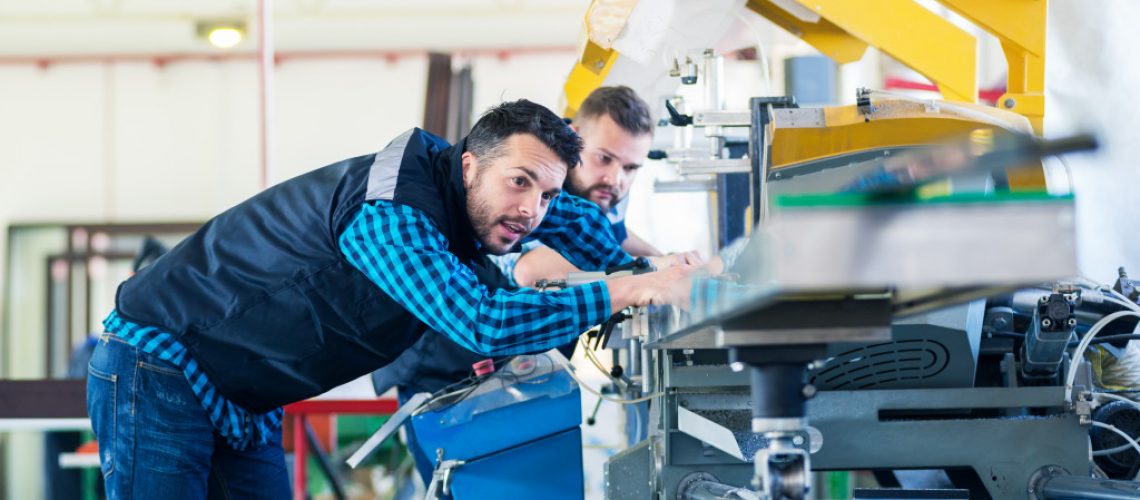The U.S. economy is reopening as 44.1 percent of the population were already fully vaccinated, and 52.7 percent had at least one dose of the Covid-19 vaccine as of June 16. With the Centers for Disease Control and Prevention (CDC) lifting restrictions for fully vaccinated people, businesses started their engines.
Surge in Manufacturing Demand Is Met with Shortages
A survey by the Institute for Supply Management (ISM) showed growth in 16 manufacturing industries in May, according to Reuters. These include machinery, transportation equipment, furniture, computer and electronic products, appliances, electrical equipment, and components, among others. Wells Fargo senior economist Sarah House stated that the current level of demand for their products is “once-in-a-lifetime.”
Unfortunately, manufacturers cannot go full blast in production because of supply problems. Their suppliers also grapple with shortages in critical basic materials, unheard-of lead times, rising prices, and transport difficulties. The supply chain problems were still a result of the pandemic when production stopped even at the level of suppliers. The entire chain is now having difficulty catching up, and there is a huge backlog of work that needs completion.
The shortages are also pushing prices further upward. The ISM survey showed that manufacturers are paying their suppliers prices close to those in July 2008, considered the Great Recession. There are fears that this will result in higher inflation. Economists state, though, that higher inflation will be temporary.
Another shortage that manufacturers are facing is labor. Ironically, 10 million American adults are unemployed, and yet factories cannot find enough people to hire. The survey attributes this to remaining anxiety regarding Covid-19 infection, health-related early retirements, not having childcare, and the substantial unemployment benefits from the government.
Alleviating Supply Chain Problems
The Association for Supply Chain Management (ASCM) recommends the use of 3-D printing to bridge the gap between surges of demand and shortages due to supply chain issues. A 3-D printer manufacturer can supply other manufacturers with the industrial equipment to create the prototypes or parts they need without relying on a third party. Hitachi Solutions states that the automotive and aerospace manufacturing industries use 3-D printing in their production.
This can greatly speed up the process from concept and design to prototyping and testing before scaled-up production for the market. A quicker turnaround means more efficiency and profitability. With consumers these days wanting fast delivery of their desires, the first product to hit the market with the latest upgrades will always win.
Furthermore, using 3-D printing equipment and additives that are environmentally friendly will minimize waste, decrease energy consumption, and reduce the companies’ carbon footprint. This by itself is a huge benefit while it also enhances the desirability of the product for consumers who are attentive.

The Industrial Internet of Things
The Internet of things (IoT) is vital to the manufacturing industry. The digitalization of production does not stop with 3-D printing. With the industrial Internet of things (IIoT), humans, machines, and artificial intelligence (AI) are digitally connected and can communicate with each other. This creates a synergy in the company covering employees, operations, equipment, production, inventory, and even customers. IIOT can automate predictive maintenance for equipment as sensors detect anomalies before any breakdown. It can also enable technicians to monitor and address problems remotely, making response time quicker.
With IIOT, manufacturers have access to real-time data processed through digital analytics by AI. This helps equip them for decision-making, innovation, efficiency, cost reduction, and improved safety, among others.
Robots have long been part of the manufacturing industry, and they continue to drive automation and smart production. According to the International Federation of Robotics (IFR), there were 2.7 million industrial robots around the world as of 2020. The strongest market is China, followed by Japan. The U.S. ranks third in the usage of industrial robots. The development in this field is the rise of cobots or collaborative robots. These are more advanced and designed to work safely beside humans.
Safe and Green Industry
It is a new world, and the U.S. manufacturing industry needs to comply with the requirements of the planet. The U.S. is among the countries that agreed to have net-zero emissions by 2050. In addition, the U.S. aims to cut its current emissions by half by 2030.
Energy Innovation program director Jeffrey Risman wrote in Forbes that in 2019, the manufacturing industry produced 33 percent of total U.S. greenhouse gas emissions from its direct and indirect emissions. He notes that cleaning up the industry will contribute much to the net-zero emissions goal. Risman cites the recommendations from 30 industry experts for the rapid decarbonization of the U.S. industrial sector.
The recommendations included a 33 percent decrease in energy intensity by 2050, the capture and sequestration of carbon up to 60 percent by 2050, use of electrification or burning clean hydrogen for energy, cogeneration and waste heat recovery, and a decrease in non-energy process emissions. It also included improvements in industrial system designs and the replacement of inefficient facilities.
Risman highlights that if the manufacturing industry abides by these recommendations, it will result in five million jobs by 2050 and a 3.3 percent increase in the U.S. gross domestic product (GDP). He states that the industry will recoup its investment in the changes through increased economic activity, so it makes perfect business sense.

